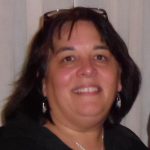
This Forum Update was provided by Penni Martorell, Wistariahurst Museum Curator, and Holyoke’s City Historian.
As a first-time, cross-pollinating Digital Library Federation Forum attendee, I was not quite clear what I, curator of a small municipally owned historic house museum in Holyoke, Massachusetts, would be able to contribute to this conference, nor was I clear about what information I would be able to bring back to my institution that would be useful.
Having a technology and library background, I found many folks with whom I could connect, and engage in insightful conversation. One heated discussion I found myself in was about the use of the term “ecosystem” in describing complex software/hardware configurations. A colleague from the University of Miami who just completed his PhD in a biological field cringed every time he heard a presenter use the term ecosystem.
That is not right! An ecosystem is a living environment. The fact that Steve Jobs and Apple have appropriated the term ‘ecosystem’ in its marketing to make Apple seem like a more ‘eco-conscious’ corporation, is disturbing. Technology is not an ecosystem. The more correct term is ‘Environment.’
I suppose the argument could be made either way, but the passion of the PhD had me on his side and thus I will use the word environment.
The session that blew me away was Askey, Griffey, Holt and Radniecki’s Perspectives on Supporting and Administering Maker Culture and Programs in Libraries. What these institutions are doing to encourage their students to be the creative problem solvers of the future was wildly inspiring. These presenters are groundbreakers at thinking outside of the box, and at encouraging their students and patrons to think even further outside of the box. The examples they shared showed how the library and the user can become collaborators and share the responsibility of maintaining and expanding the use of the technology and creative spaces. These four libraries are just an indication of how students supplied with encouragement and basic technology can bring a library solidly into the future. Plus we all got 3D-printed miniature skulls as souvenirs! Woot woot!
While traditional networking comes naturally at these conferences, I was delighted to share in the twitter undercurrents of the conference. The highlight of the tweets was the discovery of the ice-cream freezer and the photo of the chocolate chip ice cream sandwiches. It was a classic “techie” move when the GPS coordinates of the freezer were shared and we all met up after the session and reached for the ice cream.
I was delighted to meet some of the people working on exciting projects I have used, such as Katie Rawson’s Curating Menus Snapshot of the NYPL Menu Project. Other cross-pollinators from the museum world like Caroline Dechert of the International Folk Museum in Santa Fe, NM made me want to book a flight to Santa Fe just to visit her museum, and Samantha Norling from the Indiana Art Museum and I commiserated with about the struggles of underfunded and understaffed museums.
Finally, I would like to express my deepest gratitude to Max Marmor of the Kress Foundation, which sponsored my fellowship, and for the superb job done by Louisa Kwasigroch and her fantastic team of conference coordinators at CLIR. It was a fabulous experience for me, one that I will not soon forget, and one that will continue to influence the progression of my professional career. I hope to be able to return in the future, perhaps as a presenter of how I was able to put what I learned to use in my museum.
